The great equalizer: Using the web to communicate science
Vanessa Vargas-Nguyen ·Throughout the semester, we have learned the importance of science visualization to communicate complex information. It is a way to give our data a voice by presenting it in an easy to digest visual format. But just having effective science communication products is not enough, the next step is to make sure that our message is being broadly disseminated. In this age of cyberspace, nothing beats the World Wide Web (Web) as a great communication platform. With over 3 billion Internet users all over the world, the web gives us the capability to tell our story to a wide range of audiences.
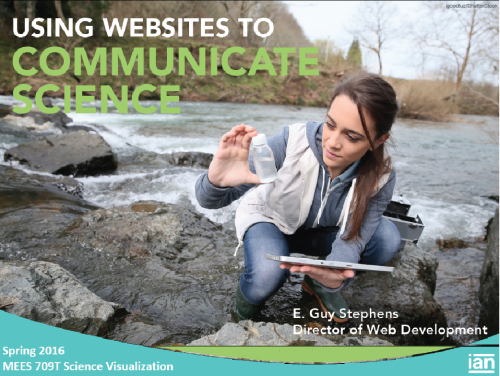
The use of the web as part of our science communication arsenal is very powerful, here are some of the reasons as discussed during our last class:
The web is a great equalizer. The web gives us a publishing platform to share our information on a level field. Your website lives on the same Internet as other websites. It is also now more available to a lot of people - gone are the days of intensive coding and “shady” backdoor to build a website. Different service-based options are now available that can give you the ability to build a very high quality website with little experience. No matter your level of experience, there’s a tool out there to serve your needs.
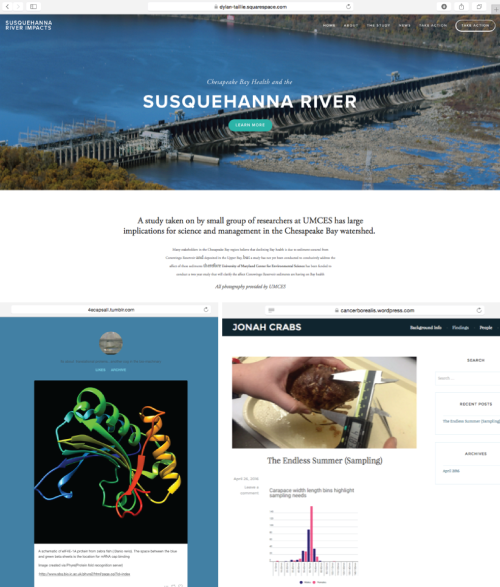
More people in more places use the web. The number of Internet users has greatly expanded in the last decade. More and more people are using the web to communicate and to find different information. Recently, trend is moving towards the use of mobile devices. Thirty-five percent of users are now accessing the web through their phones or tablets. Mobile devices are also the entry point for people with no computers or laptops; thus can be an effective way to access disadvantaged communities. Be it through the computer or various mobile devices, websites work well in different platforms.
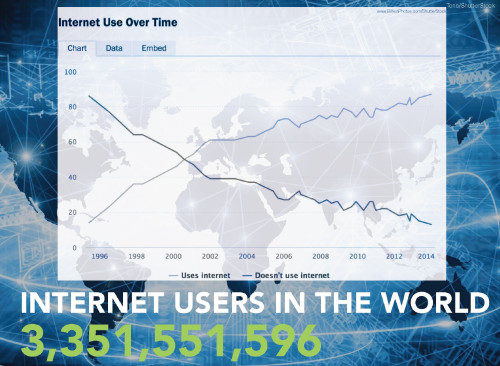
The web presents opportunity to serve as thought leaders. Publishing scientific journals or delivering presentations can be infrequent. Through writing blogs, you can share your ideas right away and you can regularly give update on your ongoing work. Blogging in a scientific capacity is now being looked at as part of the service requirements for those in the academe or government institutions. Having web presence is a great addition to your teaching and research portfolios.
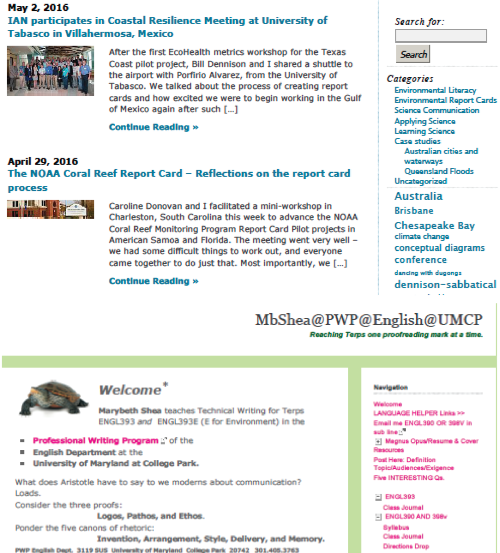
Web design if you go deeper has a lot of depth, but the barrier to get started is very small. Here are some important considerations in Web design that was offered in class:
- Plan appropriately. Ask yourself what you hope to accomplish with your website. Know what to include and NOT to include. Be aware of what you can share over the web, especially if it will conflict with future publications.
- Know your audience. Build a product for a reason, successful products need to understand and meet user needs. Set a user task to validate your website's usability.
- Building a website is an evolving process. Develop a content strategy that will help you evaluate your effectiveness (i.e. use of web analytics such as Google analytics). The success of your website is primarily determined by your content, be ready to maintain and update to remain relevant.
- Lessons learned in class carry over in web design. Sketching your ideas or creating a prototype of your website is exactly like storyboarding. It is easier to change your design when it's still in paper compared to when you've already done some work.
- Do a comparative analysis. Before you begin, find great examples of websites. Determine which aspects work and which ones do not.
- Understand what makes a great website. Generally, a great website takes into consideration the design, content, technology, user experience and user interface. Additionally, there are a lot of resources that offers web design tips (websites and video tutorials).
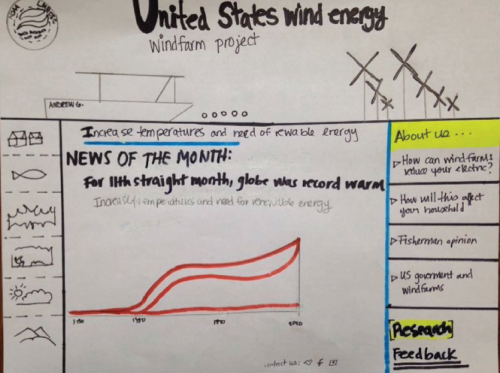
Another aspect of the web that we tackled during class was the use of different web-based data visualization tools which enable users to quickly create interactive charts, graphs, etc. Although it is easy to get started, doing minor changes can be tricky. From the class general consensus, it's still better to manually clean up graphs or charts using what was taught in the data visualization section of our class.
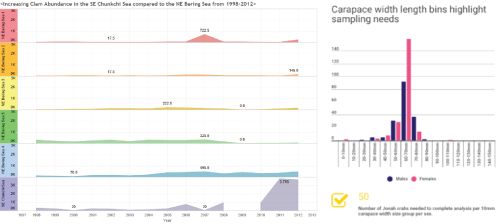
Web design has certainly progressed through the years. My own personal experience stems back many years ago, as a High School senior learning basic HTML (HyperText Markup Language) to create simple webpages. Fortunately, I've had the opportunity in the last two years to try my hand in "modern" web design (use of CMS or Content Management System). I've gone from managing the IAN blogs as part of my work, to studying different CMS and finally building a website as a personal project. I did countless hours of research, but in the end, what helped me most was the actual doing (with lots of trial-and-error and Google searches along the way!).
Finally, as a tribute to our wonderful class and a very engaging semester, I have built a simple website for our Science Visualization class. It is still a work in progress and depending on future classes, we might even expand its capabilities. Please feel free to share your ideas on how else we can improve this site! And to all our Science Visualization students, continue with your OWN website, have fun, share with us your link and stay connected!
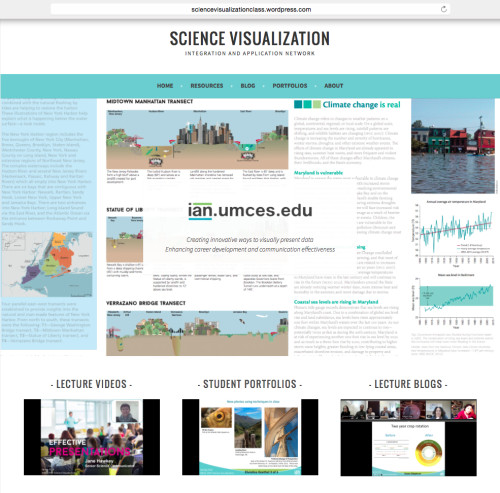
About the author
Vanessa Vargas-Nguyen

Dr. Vanessa Vargas-Nguyen is a Science Integrator with the Integration and Application Network and an associate faculty of the Marine Estuarine and Environmental Science Graduate Program. Her current interest is in transdisciplinary approaches, socio-environmental assessments, socio-environmental justice, stakeholder engagement, and adaptive environmental governance. Vanessa is originally from the Philippines and has extensive experience in molecular biology and marine science, specializing in microbial communities and molecular processes associated with Harmful Algal Blooms and shrimp, corals, and human diseases. She has since shifted her focus on how science can benefit society and was conferred with the first Ph.D. under the new Environment and Society foundation of the MEES graduate program. Her dissertation used ethnographic approaches to investigate the role of socio-environmental report cards in transdisciplinary collaboration and adaptive governance for a sustainable future. She received academic training from the University of the Philippines (BSc; MSc) and the University of Maryland (MSc; PhD). She is involved in developing holistic socio-environmental assessments for complex systems such as the Mississippi River and Chesapeake Bay watersheds and is coordinating a multi-year international transdisciplinary research consortium involving the US, Norway, Philippines, Japan, and India.
Next Post > IAN participates in Coastal Resilience Meeting at University of Tabasco in Villahermosa, Mexico
Comments
-
Adam Ostopowich 8 years ago
Great Post Vanessa! First of all I would like to thank you for this wonderful creation of the website. I Really liked the way to using the web to communicate science. It's very powerful.
-
Guy Stephens 8 years ago
Great article Vanessa! I love the new website you created - fantastic idea!
-
Kate Gillespie 8 years ago
Thank you for this blog and the creation of a website, Vanessa!
You are really spot on about the web being the ticket to disseminate your science to a world wide audience.
With social media in alliance, discourse in science has really been undergoing a transformation. Even mutants (aka trolls) cannot dim the enthusiasm that is evident, or stop the STEM and STEAM initiatives moving forward toward future innovations!
I never realized that in taking this course there would be such an unique opportunity to improve communication of my own science, and that I would come away with such a valuable array of tools to help me reach my next level.
With much gratitude to everyone, from the guest lecturers to the students, for sharing your knowledge, your feedback, and especially your "befores" and "afters" projects.
When it comes to science visualization, you are both the great equalizers, Vanessa and Bill!
-
MbS 8 years ago
Vanessa builds stuff for our class all the time and maintains the stuff, as in emails and reminders with links She really embodies the idea of build/communicate with user tasks/actions in mind.
V's "equalizer" analysis is not just a description of what is. I believe that we need to actively equalize. (Think VERB as well as NOUN, says the English professor) Information wants to be free and information increases human freedom Now I sound like William Wallace (aka Mel Gibson) in Braveheart....
So much good science is behind paywalls in academic publishing. Blogs and web content , including twitter especially at meetings-- optimized for mobile devices -- allow us to share excellent and action-able science, in the public interest, in nearly real time.
Thank V for the wonderful class. Thanks also to all the instructors and the community of practitioners -- students, all.
:)
-
Sandeep Jethwa 8 years ago
Great Post. thanks for share!
-
Steve WebStudio 7 years ago
Great article, the web has changed so much in the past decade and like you say mobile devices are the new entry point, so mobile web design is getting...and going to be one of the most important factors to consider when designng website to make sure the message is comunicated effectively no matter what devices people are use.
-
Ottawa web design 8 years ago
Thanks for this interesting post Vanessa. As a web designer I never really thought of a website as a means to communicate science but here I am learning something new. I like the website you have designed, very simple and very well laid out.